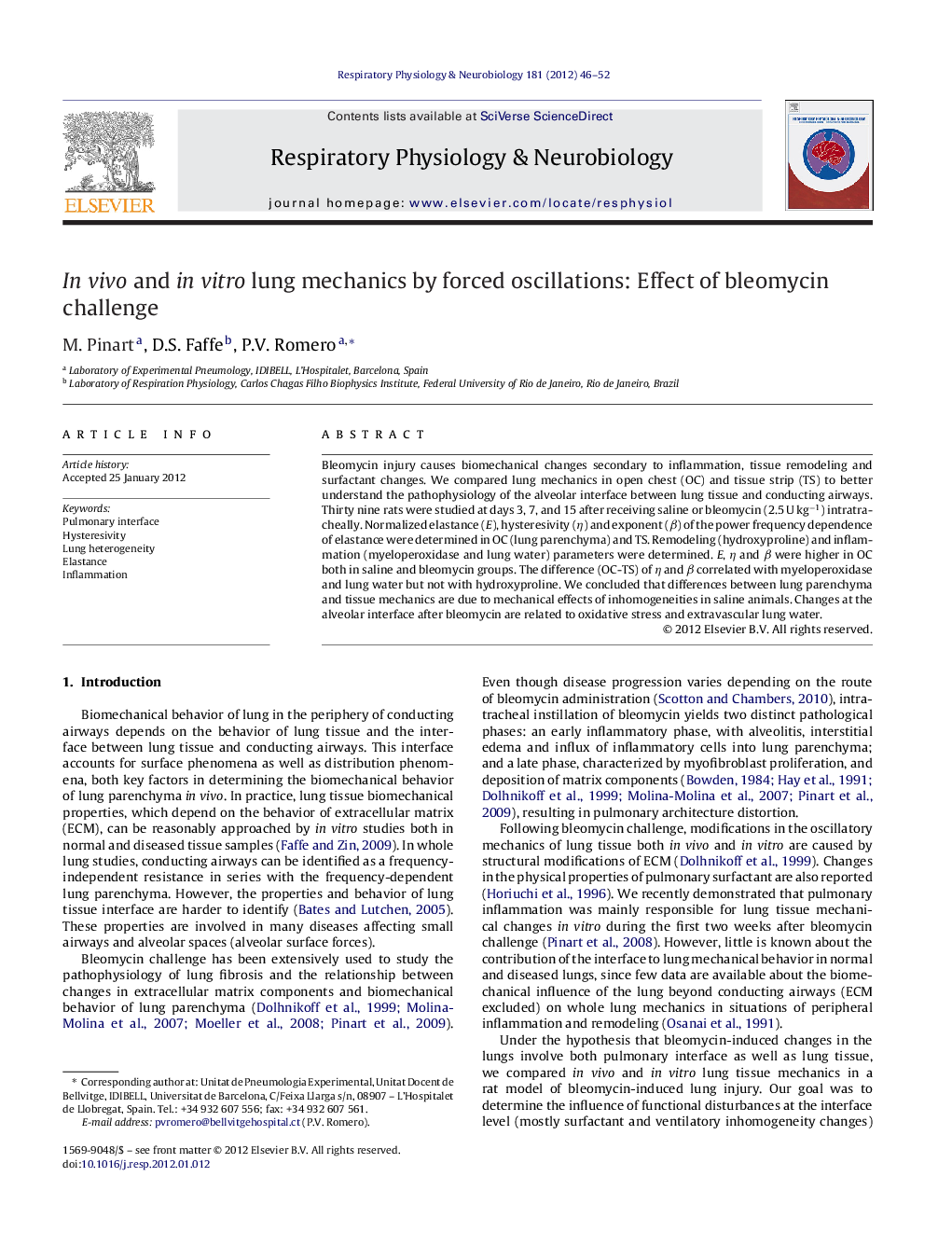| Article ID | Journal | Published Year | Pages | File Type |
|---|---|---|---|---|
| 2847343 | Respiratory Physiology & Neurobiology | 2012 | 7 Pages |
Bleomycin injury causes biomechanical changes secondary to inflammation, tissue remodeling and surfactant changes. We compared lung mechanics in open chest (OC) and tissue strip (TS) to better understand the pathophysiology of the alveolar interface between lung tissue and conducting airways. Thirty nine rats were studied at days 3, 7, and 15 after receiving saline or bleomycin (2.5 U kg−1) intratracheally. Normalized elastance (E), hysteresivity (η) and exponent (β) of the power frequency dependence of elastance were determined in OC (lung parenchyma) and TS. Remodeling (hydroxyproline) and inflammation (myeloperoxidase and lung water) parameters were determined. E, η and β were higher in OC both in saline and bleomycin groups. The difference (OC-TS) of η and β correlated with myeloperoxidase and lung water but not with hydroxyproline. We concluded that differences between lung parenchyma and tissue mechanics are due to mechanical effects of inhomogeneities in saline animals. Changes at the alveolar interface after bleomycin are related to oxidative stress and extravascular lung water.
► We compared lung mechanics in open chest (OC) and tissue strip (TS) to understand the pathophysiology of the alveolar interface between lung tissue and conducting airways after bleomycin challenge. ► Hysteresivity (η), exponent (β) of the frequency dependence of elastance, hydroxyproline, myeloperoxidase and lung water were determined. ► The difference (OC-TS) of η and β correlated with myeloperoxidase and lung water but not with hydroxyproline. ► Changes at the alveolar interface after bleomycin are related to inflammation and alveolar epithelium damage.
